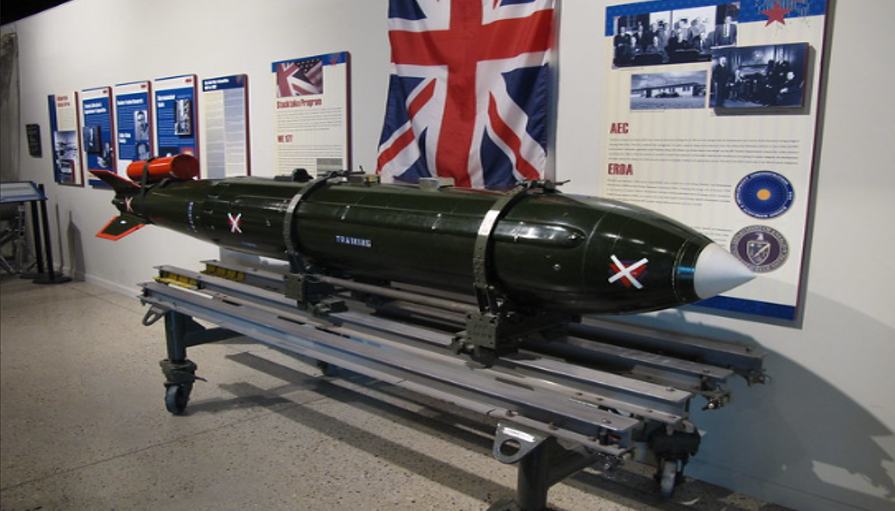Amid escalating geopolitical tensions and rising fears over Russia’s nuclear threats, the question of whether Britain should reintroduce tactical nuclear weapons has resurfaced as a critical consideration for European security.
Historically, during the Cold War, Britain’s V-force bombers—including the iconic Avro Vulcan—were central to NATO’s deterrence strategy, armed with nuclear bombs to counter a potential Soviet threat. However, after the dissolution of the Soviet Union, Britain moved towards submarine-launched strategic warheads, phasing out tactical options.
Now, in light of Russia’s growing nuclear arsenal and Russian President Vladimir Putin’s aggressive posture, European leaders are reconsidering their deterrence strategies. Germany’s CDU leader Friedrich Merz, a likely future chancellor, recently suggested that Germany should discuss nuclear sharing with Britain and France, the continent’s two remaining nuclear powers.
Tensions have soared as Russia has threatened the use of tactical nuclear weapons in the ongoing conflict in Ukraine and against NATO members. This raises a pressing question for European defense: how should NATO respond to Russia’s potential deployment of non-strategic nukes?
Experts like Lukasz Kulesa from the Royal United Services Institute (RUSI) emphasize that a tactical nuclear exchange could lead to a broader escalation. Unlike strategic nuclear weapons, which have massive destructive power aimed at cities and critical infrastructure, tactical nukes are smaller, battlefield weapons with yields as low as 10 kilotons—designed to hit military targets such as bases, airfields, or troop formations. While these warheads are less powerful, their use could result in a more limited, regional confrontation, one that NATO must be prepared to address.
Russia’s tactical nuclear arsenal is formidable, with an estimated 1,000 to 2,000 warheads. These weapons are seen as a potential means to level the battlefield during an invasion of Europe, where Russia’s conventional forces might be outmatched by NATO’s. The idea behind developing a tactical nuclear response within NATO would be to deter Russia from using its nukes on the battlefield by posing a credible threat of a proportional nuclear strike.
At present, the United States maintains a stockpile of B61 nuclear bombs at several European airbases, including those in Germany and Italy. However, uncertainty over the future of U.S. military engagement in Europe, particularly under President Donald Trump’s administration, has raised concerns that these weapons could be withdrawn, leaving NATO with a potential “deterrence gap.”
To fill this void, the UK could reinstate its own tactical nuclear capability, which could be launched from platforms like Royal Air Force jets or Royal Navy submarines. Charles Woodburn, CEO of BAE Systems, stated that the UK possesses the technical capabilities to develop tactical bombs. However, this decision hinges on whether the government is prepared to commit to such an escalation, balancing the cost and political ramifications.
While creating a new nuclear program would be costly and controversial, some, like William Alberque from the Stimson Center, argue that it is an option worth considering, particularly if NATO allies are increasingly concerned about the US withdrawal from Europe. A proposed “Atlantic nuclear force” would involve Britain and France expanding their nuclear capabilities to serve as Europe’s deterrence, without violating non-proliferation treaties. This arrangement could offer a joint response to Russian aggression while maintaining national control over their respective arsenals.
Another option would be for Britain to develop air-launched cruise missiles compatible with its existing military infrastructure. This would involve either sea-launched or air-launched nuclear cruise missiles, potentially in collaboration with France, which already operates these systems.
Although the nuclear arms race is a source of significant political and ethical debate, the need for a reliable deterrent against Russia’s tactical nuclear weapons has never been more pressing. NATO’s collective defense strategy has long been based on nuclear deterrence, and the absence of U.S. nuclear weapons from the continent could prompt European nations, led by the UK, to bolster their own defense capabilities.
The UK government has maintained ambiguity regarding when and how it would use its nuclear arsenal, with the Ministry of Defence reaffirming its commitment to nuclear deterrence as a means to counter the most extreme threats to both national and allied security.
As the geopolitical landscape shifts, Europe may need to reconsider its reliance on external powers like the U.S. and move towards a more self-reliant nuclear defense. The return of British tactical nuclear weapons could play a pivotal role in maintaining a credible defense against Russian aggression, ensuring the security of NATO for the long term.
Excerpts from The telegraph’s How the return of British tactical nuclear weapons could save Europe
WE 177 British Nuclear Bomb Picture by Kelly Michals on Flickr CC BY-NC 2.0



